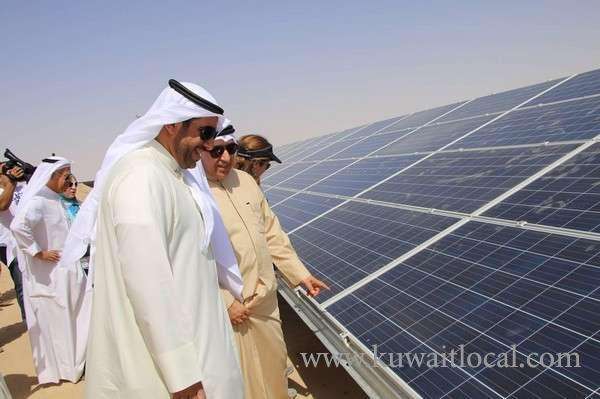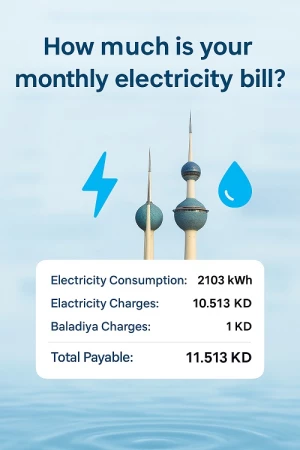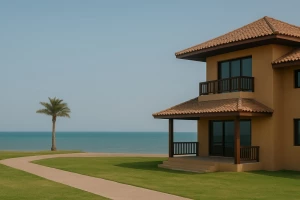Latest News
- Expats Alert: PACI Just Changed The Rules For Updating Your Addr...
- Best Pizza In Kuwait: Top Brands And What To Order
- Best Budget-Friendly Chalets & Villas In Kuwait For Weekend Geta...
- Why Electricity Bills Are Rising In Kuwait & Smart Ways Expats C...
- App Store Optimization: Why It’s Becoming A Core Part Of SEO Str...
- Best Shower Filters In Kuwait For Hair Fall And Skin Protection
- Exness Sets A New Standard Of Consistency In The Trading Industr...
- Instant Withdrawals In Trading – A Game Changer For Traders In K...
- Best Abaya Shop In Kuwait: Editorial Review Of Abay.com
- IPhone 17 In Kuwait: Prices, Colors, Specs & Where To Buy
- Best Drinking Water Filter For Home In Kuwait
- Avoid Common Qatar E-visa Application Mistakes. Learn The Top 5...
Renewable Energy From Oil Competitor To Economic Project
Thanks to collective inter-agency effort to materialize the vision of Kuwait's political leadership, solar, and wind energies have become a tangible reality after Al-Shaqaya Renewable Energy Complex went operational. The complex has been hooked to the national power grid recently, thus adding nearly 23 million kilowatts/hour in the first six months to the country's generating capacity.
Kuwait's attempts to tap into renewable energy sources date back to the 1980s; projects in this sector came to the fore in the national economic development plan in 2010 under the vision of His Highness the Amir Sheikh Sabah Al-Ahmad Al-Jaber Al-Sabah for covering 15 percent of the demand for electricity from renewables through 2030. Based on an oil price of US$45 per barrel, the vision aims to save up to US$ 2.5 billion a year that would be spent on electricity generated from fossil fuel.
The Ministry of Electricity and Water, Kuwait National Petroleum Company (KNPC) and Kuwait Institute for Scientific Research (KISR) worked together to turn renewable energy from competitors to oil - the main source of national income, into an investment project with high economic and environment returns.
Located in the western area of Kuwait, Al-Shaqaya Renewable Energy Complex opens new horizons for private investors in the coming stages, thus promoting innovation in this field, Chairman of the Complex Dr. Salem Al-Hajraf said.
"The Complex consists of two power-generating plants - one solar and the other wind," he said in statements to KUNA. "The total output of clean energy from the Complex amounts to 23 million kw/h in the first six months equivalent to the power produced from 40,000 barrels of oil worth KD 600,000 (some US$ 1.9 million)," he revealed.
;"The unconventional energy is highly cost-effective. The energy production of the Complex costs in the first six months only KD 400,000 (nearly US$ 1.3 million), so the difference between the cost of conventional and unconventional energy prices is KD 160,000 or US$ 500.000," Dr. Al-Hajraf stated. Tapping into clean energy saved environment from 15,000 tons of carbon dioxide that could be emitted from fossil fuel in this period, he noted.
"The three-phase Complex is a pioneering project, jointly developed by KISR and KNPC in collaboration with the Ministry. Its construction works started in 2013. When its final phase is complete in 2030, the Complex will spare up to 12.5 million barrels of oil a year or 3-4 percent of the total oil consumption," he added. With a total population of 4.4 million people, Kuwait consumes 350,000 barrels of oil per day, valued at US$ 15.7 million, to generate electricity and desalinate seawater.
The power generated from the Complex will grow from 20 megawatts in the current first phase to 50 megawatts in 2018, 1,000 megawatts in 2020 and 2,000 megawatts in the third phase in 2025.
Undersecretary of the Ministry of Electricity and Water Eng. Mohammad Bushehri projected the domestic demand for oil to expand to one million bpd by 2035 when the country's population will grew to 5.5 million.
He said the total power generating capacity of the country amounts to 16,700 megawatts, noting that the electrical load this summer has hit 13,800 megawatts, which forced tapping into the potentials of alternative energy.
SOURCE : KUNA





